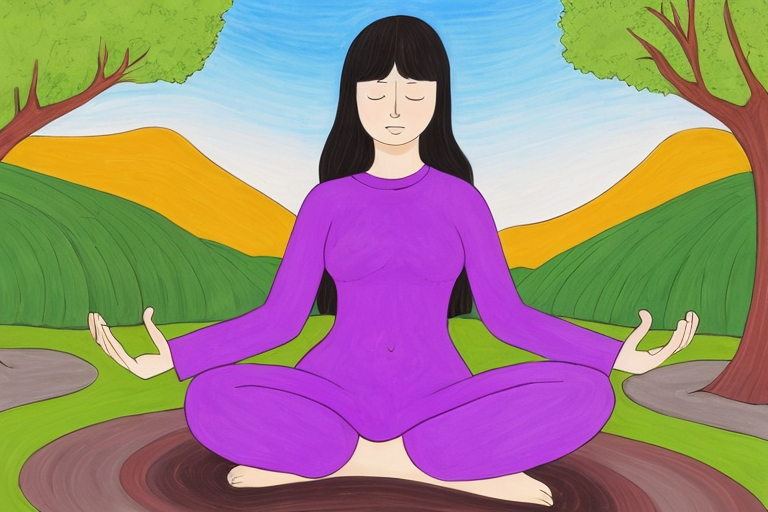Lights, Camera, Action! The Importance of Movie Trailers
Movie trailers are the ultimate sneak peek into the world of cinema. They are the first glimpse that audiences get of a film, and they can make or break a movie’s success. A well-crafted trailer can generate buzz and excitement, while a poorly made one can turn audiences away. In this section, we will explore the importance of movie trailers and how they have evolved over time.
Movie trailers have been around for almost as long as movies themselves. In the early days of cinema, trailers were simply a way to promote upcoming films. They were shown after the feature film had ended, and they were often just a few minutes long. As the film industry grew, so did the importance of trailers. They became a crucial part of the marketing strategy for movies, and they were shown before the feature film began.
Over time, trailers have become more sophisticated and complex. They are now a blend of art and science, designed to capture the audience’s attention and generate excitement. Trailers are no longer just a few minutes of footage stitched together; they are carefully crafted pieces of marketing material that can make or break a movie’s success.
The evolution of movie trailers has been driven by technological advancements. In the early days of cinema, trailers were shot on film and edited by hand. Today, trailers are created using digital technology, which allows for more precise editing and special effects. The rise of the internet has also had a significant impact on the trailer industry. Trailers can now be viewed online, and they can be shared on social media, making them more accessible to audiences around the world.
Despite the changes in technology and style, the fundamental purpose of movie trailers remains the same: to generate interest and excitement for upcoming films. A well-crafted trailer can create buzz and anticipation, while a poorly made one can turn audiences away. In the next section, we will explore the impact of trailers on box office performance.
In summary, movie trailers are an essential part of the film industry. They have evolved over time, driven by technological advancements and changes in marketing strategy. A well-crafted trailer can generate excitement and anticipation for an upcoming film, while a poorly made one can turn audiences away. In the next section, we will explore the impact of trailers on box office performance.
The Power of Movie Trailers
Movie trailers have become an essential part of the movie-going experience. They serve as a sneak peek into what audiences can expect from a film, and they can make or break a movie’s success at the box office. But how exactly do movie trailers impact audience expectations, and what role do they play in shaping the overall reception of a movie?
First and foremost, movie trailers are designed to create buzz and generate interest in a film. They offer a glimpse into the story, characters, and overall tone of a movie, and they often feature the most exciting or visually stunning moments from the film. As a result, trailers can set high expectations for audiences, and if those expectations are not met, it can lead to disappointment and negative reviews.
One example of this is the 2016 movie “Suicide Squad.” The film’s trailers promised a dark and edgy take on the superhero genre, with a focus on the villainous characters. However, when the movie was released, it was criticized for its uneven tone and lackluster plot. Many fans felt that the movie did not live up to the hype created by the trailers, and it ultimately received mixed reviews.
On the other hand, a well-crafted trailer can generate excitement and positive buzz for a movie, even if it is not a guaranteed box office success. One example of this is the 2017 movie “Baby Driver.” The film’s trailers showcased its unique blend of action, music, and humor, and it generated a lot of buzz among moviegoers. While the movie did not break any box office records, it was critically acclaimed and became a fan favorite.
The impact of trailers on audience expectations can also be seen in the way that movies are marketed and promoted. In some cases, trailers can be misleading or give away too much of the plot, which can lead to negative reviews and audience backlash. However, when done correctly, trailers can create a sense of anticipation and excitement that can translate into box office success.
In order to create an effective trailer, filmmakers must carefully balance excitement with spoiler-free content. They must also consider the target audience and the overall tone of the movie. Music and editing are also crucial elements of a successful trailer, as they can help to set the mood and create a sense of anticipation.
Looking to the future, it is clear that movie trailers will continue to evolve and adapt to new technologies and changing audience expectations. Streaming services like Netflix and Amazon Prime have already disrupted the traditional movie marketing model, and it will be interesting to see how trailers will be used to promote movies in this new landscape.
The Power of Trailers on Box Office Performance
Movie trailers have become an integral part of the film industry, with their ability to generate buzz and excitement for upcoming releases. A well-crafted trailer can make or break a movie’s box office success. In this section, we will explore the impact of trailers on box office performance, including case studies of successful trailers and the negative effects of poorly received trailers.
A successful trailer can create a buzz around a movie and generate interest among potential viewers. One such example is the trailer for the 2017 horror movie, “It.” The trailer generated over 197 million views in just 24 hours, breaking the record for the most viewed trailer in a single day. The trailer’s success was attributed to its use of suspenseful music, jump scares, and the iconic clown, Pennywise. The trailer’s success translated into box office success, with the movie grossing over $700 million worldwide.
On the other hand, poorly received trailers can have a negative impact on a movie’s reputation and box office performance. One such example is the trailer for the 2019 movie, “Cats.” The trailer was heavily criticized for its use of CGI and the uncanny valley effect. The trailer’s negative reception translated into poor box office performance, with the movie grossing only $73 million worldwide, well below its $95 million budget.
Another example of a poorly received trailer is the 2016 movie, “Suicide Squad.” The trailer was initially well-received, generating over 136 million views in just one week. However, the movie’s poor critical reception and negative word of mouth led to a decline in box office performance. The movie grossed over $746 million worldwide, but its reception was considered a disappointment given its high expectations.
The Art of Crafting a Compelling Trailer
Movie trailers are often the first point of contact between a film and its potential audience. They serve as a preview, a taste of what’s to come, and a way to generate excitement and anticipation for a movie’s release. But how are these trailers created? What goes into the process of crafting a compelling, effective trailer that captures the essence of a film while also enticing viewers to see it? In this section, we’ll take a behind-the-scenes look at the creative process behind movie trailers.
To get a better understanding of this process, we spoke with several filmmakers who have experience creating trailers for their own films. According to Frankie, a director and writer, the key to a successful trailer is to “find the heart of the story and showcase it in a way that’s both exciting and emotionally resonant.” This sentiment was echoed by other filmmakers we spoke with, who emphasized the importance of identifying the core themes and emotions of a film and conveying them in a way that’s visually compelling.
One of the most crucial elements of a movie trailer is the music. As Uvanni, a composer who has worked on several trailers, explains, “The music sets the tone and creates the emotional landscape for the trailer.” The right music can make a trailer feel epic, suspenseful, romantic, or any other emotion the filmmakers want to convey. But finding the right music is not always easy. It requires a deep understanding of the film’s tone, themes, and characters, as well as a careful consideration of how the music will interact with the visuals.
Editing is another essential component of a movie trailer. A well-edited trailer can make even a mediocre film look exciting and engaging, while a poorly edited trailer can turn off potential viewers. According to a son of a famous director, who has worked as an editor on several trailers, “The key is to find the right balance between showing enough to get people interested without giving away too much.” This can be a delicate balancing act, as filmmakers want to create excitement and anticipation without spoiling any of the film’s surprises.
One of the biggest challenges of creating a movie trailer is deciding what to include and what to leave out. Filmmakers must condense a two-hour movie into a two-minute trailer, which means making tough choices about which scenes, characters, and plot points to showcase. As a judge who has experience working on trailers explains, “It’s important to remember that the trailer is not the movie. It’s a marketing tool designed to get people interested in the movie.” This means that filmmakers must be strategic in their choices, focusing on the elements that will best capture the attention of potential viewers.
Despite these challenges, the creative process behind movie trailers can also be incredibly rewarding. As one filmmaker we spoke with put it, “Creating a trailer is like making a mini-movie. You get to tell a story in a condensed format, and you have the opportunity to really showcase the best parts of your film.” For many filmmakers, the trailer is a chance to flex their creative muscles and experiment with different styles and techniques.
The Future of Movie Trailers
Movie trailers have come a long way since their inception in the early 20th century. From their humble beginnings as simple previews for upcoming films, trailers have evolved into a powerful marketing tool that can make or break a movie’s success at the box office. As we move further into the digital age, the future of movie trailers is more exciting than ever before.
One of the most significant changes in recent years has been the impact of streaming services on the trailer industry. With more people than ever before watching movies and TV shows online, studios are now releasing trailers exclusively on platforms like YouTube and Netflix. This has led to a shift in the way trailers are created, with filmmakers now focusing on creating shorter, more attention-grabbing trailers that can be easily shared on social media.
Another trend that is likely to continue in the future is the use of innovative technology in trailer creation. With the rise of virtual reality and augmented reality, filmmakers are now experimenting with creating trailers that offer viewers a more immersive experience. For example, some trailers now include 360-degree video footage that allows viewers to explore the movie’s world in a more interactive way.
In addition to these technological advancements, there are also opportunities for innovation in the way trailers are created. For example, some filmmakers are now experimenting with creating trailers that tell a story in their own right, rather than simply previewing the movie. This can help to build excitement and anticipation for the film, while also giving viewers a taste of the movie’s style and tone.
Despite these changes, one thing remains constant: the enduring significance of movie trailers in the film industry. Whether you’re a casual moviegoer or a die-hard film fan, trailers are an essential part of the movie-watching experience. They offer a glimpse into the world of the movie, and can help to build excitement and anticipation for the film’s release.









